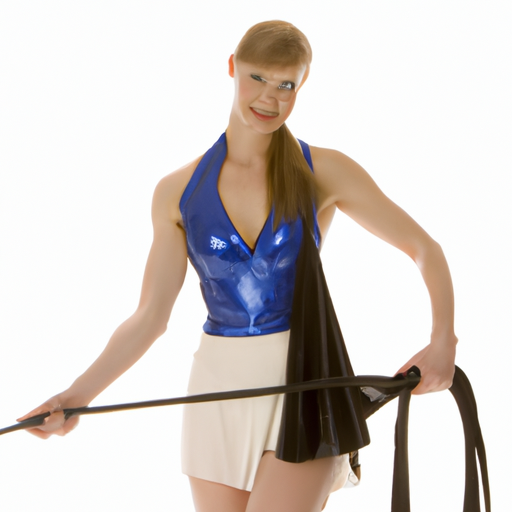Rubber Bondage: Exploring Different Styles and Techniques

Bondage is a practice that has been enjoyed by individuals and couples for centuries. It involves the use of restraints to enhance pleasure, explore power dynamics, and create a sense of vulnerability and trust. One popular variation of bondage is rubber bondage, which involves the use of rubber materials in the restraining process. In this blog post, we will delve into the world of rubber bondage and explore different styles and techniques that can be employed.
Latex Clothing: A fundamental aspect of rubber bondage is the use of latex clothing. Latex is a stretchy and skin-tight material that creates a unique sensory experience for both the wearer and the observer. It can be used to create full-body suits, hoods, gloves, and stockings, among other items. The tightness of latex enhances the feeling of restriction, intensifying the overall bondage experience.
Vacuum Bed: One popular technique in rubber bondage is the use of a vacuum bed. A vacuum bed is made of a latex sheet that is stretched over a frame. The person being restrained lies on top of the sheet, and the air is vacuumed out, causing the latex to conform tightly to their body. This technique provides a complete enclosure and immobilization, heightening sensations of vulnerability and control.
Latex Straitjacket: The latex straitjacket is another style of rubber bondage that involves the use of a specially designed latex garment. It is typically made in the shape of a traditional straitjacket but constructed from latex material. The latex straitjacket restricts movement and wraps the wearer tightly, creating a feeling of helplessness and surrender. It is often combined with other bondage elements, such as hoods or gags, to enhance the experience further.
Rubber Rope Bondage: While traditional rope bondage is widely practiced, rubber rope bondage adds an extra dimension to the experience. Rubber ropes made from latex or rubber-coated materials can be used to bind the body, limbs, or even create intricate patterns. These rubber ropes provide a different texture and sensation compared to conventional ropes, adding to the overall sensory experience.
Latex Sleepsacks: For those seeking an all-encompassing rubber bondage experience, latex sleepsacks are an excellent choice. These sacks are made from latex and designed to encase the entire body, from neck to feet. They typically have zippers or laces for entry and exit, ensuring the wearer is securely trapped inside. Latex sleepsacks provide a unique combination of restriction, compression, and sensory deprivation, making them a popular choice among bondage enthusiasts.
Latex Hoods and Masks: Hoods and masks made from latex are an integral part of rubber bondage. These items can cover the entire head or specific parts, such as the eyes, mouth, or nose. Latex hoods and masks can be used to create a sense of anonymity, sensory deprivation, or to enhance the aesthetic appeal of the bondage scene. They are often combined with other elements, such as gags or blindfolds, to intensify the experience further.
It is essential to note that engaging in bondage, including rubber bondage, requires open communication, trust, and consent between all parties involved. Safety should always be a top priority, and participants should have a clear understanding of their boundaries and limitations. It is recommended to use proper equipment, such as medical-grade latex, to minimize the risk of allergic reactions or other complications.
In conclusion, rubber bondage offers a unique and exciting way to explore power dynamics, enhance pleasure, and create a sense of vulnerability and trust. With different styles and techniques, such as latex clothing, vacuum beds, latex straitjackets, rubber rope bondage, latex sleepsacks, and latex hoods and masks, individuals and couples can immerse themselves in a world of sensory experiences and intense sensations. Remember to prioritize safety, communication, and consent, and always explore within your comfort zone. Visit the site.
How are wedge and flat cams classified?
Wedge and flat cams are two common types of cams used in various mechanical systems. These cams play a crucial role in converting rotary motion into linear or reciprocating motion. In this blog post, we will explore how wedge and flat cams are classified based on their design and applications.

Wedge Cams:
Wedge cams are named so because of their characteristic wedge-shaped profile. These cams have a sloping surface that interacts with a follower to produce the desired motion. The follower, which can be a flat or roller follower, moves along the sloping surface of the cam, resulting in a linear or reciprocating motion.
Classification of Wedge Cams:
Wedge cams can be classified into three main types based on the shape of their profile:
Symmetrical Wedge Cams: These cams have a symmetrical wedge profile, meaning that the slope on one side of the cam is the mirror image of the slope on the other side. This type of cam is commonly used in applications where the motion needs to be balanced, such as in engines or pumps.
Asymmetrical Wedge Cams: Unlike symmetrical wedge cams, asymmetrical wedge cams have slopes that are not mirror images of each other. This design allows for different motion characteristics on either side of the cam. Asymmetrical wedge cams are often used in applications where the motion needs to be varied or customized, such as in manufacturing or automation systems.
Tapered Wedge Cams: Tapered wedge cams have a gradually changing slope along their length. This design allows for smoother and more controlled motion compared to symmetrical or asymmetrical wedge cams. Tapered wedge cams find applications in precision machinery, where accuracy and smooth operation are crucial.
Flat Cams:
Flat cams, also known as plate cams, have a flat and circular profile. Unlike wedge cams, which rely on a sloping surface, flat cams use the shape and position of their followers to produce the desired motion. The follower, which can be a flat or roller follower, moves along the flat surface of the cam, resulting in a linear or reciprocating motion.
Classification of Flat Cams:
Flat cams can be classified into two main types based on their design:
Radial Flat Cams: Radial flat cams have their followers positioned radially around the cam’s center. As the cam rotates, the followers move in a radial direction, producing linear or reciprocating motion. Radial flat cams are commonly used in applications where compactness and simplicity are essential, such as in clock mechanisms or small appliances.
Axial Flat Cams: Axial flat cams have their followers positioned along the same axis as the cam’s rotation. As the cam rotates, the followers move in an axial direction, resulting in linear or reciprocating motion. Axial flat cams are often used in applications where high force transmission is required, such as in heavy machinery or industrial equipment.
In conclusion, wedge and flat cams are classified based on their design and applications. Wedge cams come in various shapes, including symmetrical, asymmetrical, and tapered, allowing for different motion characteristics. On the other hand, flat cams can be either radial or axial, depending on the position of their followers. Understanding the classification of wedge and flat cams is crucial for engineers and designers in selecting the most suitable cam for their specific applications.